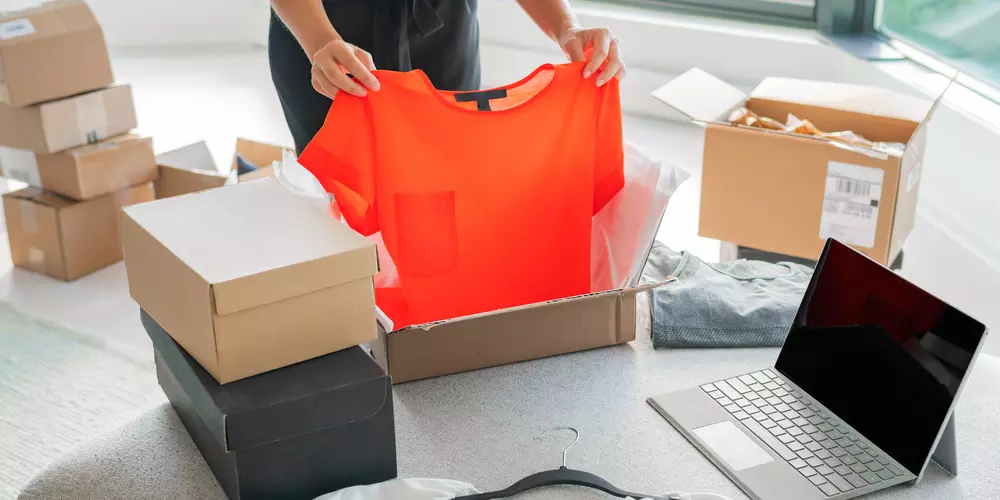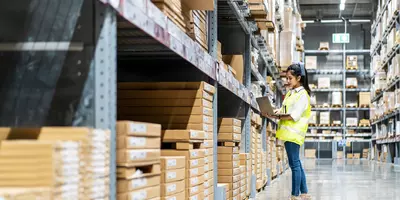E-Commerce accelerated and evolved last year, growing 44%. Online sales currently account for more than one in every five transactions, and online spending represented 21.3% of total retail sales for the year. For many e-Commerce merchants, acceleration can cause growing pains, and one potential pain point is e-Commerce returns management.
The Importance of Good Returns Management
Returns are a part of any retail shopping experience. 76% of customers returned items from their last purchase, and 41% of online shoppers buy variations on an item with a return plan in mind. 3 in 4 consumers consider returns to be a “hassle”, reducing customer satisfaction and loyalty. With an average return rate for an online purchase between 20 and 30%, e-Commerce brands have plenty of opportunities to win – or lose – customers based on their returns management process.
In short, returns management is not simply a logistical challenge. It is a differentiator for e-Commerce brands and is critical for customer satisfaction. 96% of customers intend to purchase from a retailer again based on an “easy” or “very easy” returns experience.
In addition to improving customer satisfaction and loyalty, merchants should also shift their thinking from returns as a logistical cost to a potential profit center, helping attract customers, promote their brands, and improve customer retention. With peak season on the horizon, now is the time for e-Commerce merchants to pursue the right returns management strategies to support them and their customers.
3 Keys to Successful Returns Management
1. Assess Current Processes, Policies, and Technologies
Processes:
Returns cost time and money. Optimize returns management by first examining the current returns management process. Are there gaps or pain points today? What are customers saying? Look for pain points and opportunities to improve throughput.
When possible, consider how to automate the return process for the customer further. This improves their returns experience, increasing the odds of future purchases.
Policies:
Examine how current returns policies may be impacting customers. e-Commerce brands should consider how they can shape their policies to influence both initial purchase decisions and returns management. For example, 67% of consumers are deterred from future purchases if required to pay for return shipping or restocking, losing retailers future revenue. In contrast, customer-centric policies can turn a return into a future purchase.
Technologies:
Additionally, e-Commerce merchants should examine where technology can improve visibility for themselves and their customers. For example, while many merchants leverage an Order Management System (OMS), they may be sub-optimized when it comes to returns management. Merchants may be able to further integrate with logistics partners to create improved visibility throughout the delivery and returns process as well, providing real-time updates to the customer and gaining a clearer picture of overall inventory.
2. Explore New Ways of Managing Returns
Pursue Regional Strategies
For many retailers with national or international reach, managing returns via regional fulfillment nodes can improve costs and provide a net new sales opportunity. Analyze returns data and customer feedback to determine if goods returned in a certain region can also be resold within that region, reducing the amount of time inventory is tied up in shipping.
When considering an international returns process, it is critical to find trusted carrier partners to help navigate cross-border logistics.
Consider BOPIS and BORIS
The COVID-19 crisis forced retailers to innovate, and many consumers want convenient forms of shopping such as BOPIS (“Buy Online, Pick-Up in Store”). The convenience factor of BOPIS is key, and research from The National Retail Federation indicating 70% of polled consumers claiming BOPIS improved their shopping experience. For retailers, BOPIS can reduce shipping costs and improve inventory management.
When it comes to exploring new ways to manage returns, many omnichannel retailers are likewise leveraging BORIS (“Buy Online Return in Store”) to navigate customer expectations while reducing the cost and time required to ship those returns. BORIS can offer similar benefits to BOPIS while also re-engaging customers with the in-store experience.
Recapture Costs from Damaged Goods
One area of particular interest is the damaged or aging goods process. Up to 10% of total supply chain costs can be trapped in the “return and repair” process. Consider ways to recapture value at this stage by repositioning a repaired product for resale, either through the brand’s own e-Commerce platform or via a reseller. It can also optimize both the cost and time required to manage the repair/recycle/donate/liquidate process by outsourcing to a 3PL fulfillment partner
Go Green
More than 71% of customers are paying more attention to retailers’ corporate values than they were a year ago, and that includes sustainability. Returns management is another way to pursue sustainability. Consider how orders can be aggregated or shipped in bulk, saving on shipping costs and reducing fuel waste, and work with the right carrier partners to focus on a more sustainable supply chain.
3. Leverage Carrier Partnerships
Finding the right carrier partners is critical for successful returns management. Consider your current carrier network and determine what partner support is required to both successfully meet customer expectations and speed the reverse logistics process. The more rapidly partners can manage returns on your behalf, the faster you can reclaim value from the returned inventory.
When pursuing partners, seek to integrate relevant technology to transparently track inventory throughout your network. Retailers need a seamless and transparent way to manage their supply chains, and technology integrations can accelerate the process.
As you work with carrier partners, pay attention to the data to determine if there are new approaches you can take to improve returns. For example, if goods are shipped to the East Coast, find ways to store returned inventory regionally to resell to the same region.
Where GEODIS MyParcel Can Help
GEODIS MyParcel makes it easy for domestic e-Commerce brands to go global. Our small parcel shipping service currently ships to 27 European countries, Great Britain, and Canada with guaranteed delivery in 4-6 days. How do we do this? By leveraging our parcel expertise, e-Commerce experience, deep understanding of global customs clearance processes, and integrated technology.
We can help you strike the balance between speed of delivery and total costs. We offer an end-to-end global transportation network and a fully integrated digital platform to make international shipping a breeze for you and your customers. You can rely on our many years of e-Commerce experience to implement. Learn more about what GEODIS MyParcel can bring to your international e-Commerce business by contacting us today.
Many businesses are searching for ways to capitalize on this growth trend to increase their e-Commerce revenue. One highly strategic option for merchants on the rise is to expand into international markets with their e-Commerce offerings.
Stay on top of key trends. Subscribe to our insights today.




















































.jpg687d.jpg?itok=GR9mYxHH)
 by
by 
 by
by 